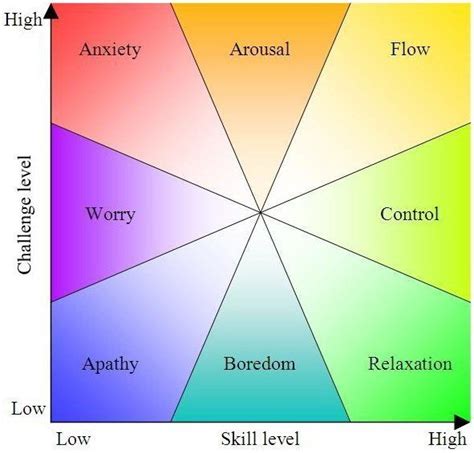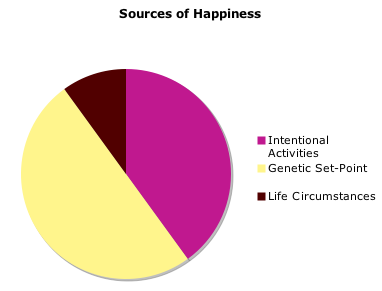One of the main areas of research in positive psychology is the search for positive traits of character, aka ‘strengths’. There are a few models of strengths out there now, such as Gallup’s workplace-oriented StrengthsFinder model (if you’ve seen the book ‘Now, discover your strengths’, that what that is all about), and the more recent Realise2 model from the Centre for Applied Positive Psychology. I’ll look at a different one here, the “Values in Action” model, or VIA, which was sort of the flagship project of pos psych. I might write something about the others another time, but it’ll be hard since Gallup are stingy about releasing their data (it’s a commercial product) and I know little about Realise2.
Can character be studied?
I think the actual question here is, does character exist? Some people, like the social constructionists, say no; essentially there is no character, it’s just a social construction, and the language a society has influences our perception of it. From this view, whatever the biases of the researchers are (conscious or not) will end up being what they find. More on this later. But, if character is real, and if there is consistency to it over time and across situations, then surely you can study it (assuming you can measure it too).
What is a strength?
The VIA model looks at character as a family of traits, which exist in different degrees in each individual. These different traits are strengths. Here’s how they were determined.
A number of researchers including Chris Peterson and Martin Seligman carried out a huge literature review of religious, philosophical, scientific and other texts from multiple cultures. Everything from the Bible to the Tao Te Ching was included, and they pulled out every mention they could find of any positive or virtuous characteristic, and made a big list. So they are not starting from existing scientific models and building upon them (although scientific papers were included in the lit search). This may be because there was little or no scientific framework to build on in the first place.
To narrow down the big list of candidate strengths, they applied a set of criteria. The aim here seemed, to me at least, not so concerned with finding out what character is, in a pure ‘what we find, we find’ mentality, but rather to find a specific model of character with applied ends in mind. I could be wrong but that’s what it seems like. Or maybe they thought this model would just be the starting point either way.
The criteria they used to select or reject strengths were not empirically determined, as far as I am aware. Here they are:
- Ubiquity— is widely recognized across cultures
- Fulfilling— contributes to individual fulfillment, satisfaction, and happiness broadly construed
- Morally valued— is valued in its own right and not as a means to an end
- Does not diminish others— elevates others who witness it, producing admiration, not jealousy
- Nonfelicitous opposite— has obvious antonyms that are “negative”
- Traitlike— is an individual difference with demonstrable generality and stability
- Measurable— has been successfully measured by researchers as an individual difference
- Distinctiveness— is not redundant (conceptually or empirically) with other character strengths
- Paragons— is strikingly embodied in some individuals
- Prodigies— is precociously shown by some children or youths
- Selective absence—is missing altogether in some individuals
- Institutions—is the deliberate target of societal practices and rituals that try to cultivate it
They ended up with a list of 24 strengths after applying these criteria.
As you can see, these criteria make perfect sense – intuitively. You would expect character strengths to be fulfilling, measurable, have paragons, etc. You wouldn’t expect good character to be something that diminishes others, or is not morally valued.
But it’s still not empirical, no matter how much sense it makes. If you have a list of, say, 500 potential traits, you could end up with vastly different end results by using slightly different criteria. Remember our hypothetical social constructionist’s argument that researcher bias will influence what you come up with when you study character? Here’s their cue to hypothetically pipe up! But there’s more.
Some of the strengths in the model don’t actually meet all of these criteria. In the 800-page tome that describes this model (1), a chapter is given to each strength, along with a checklist of which ones it met. I don’t have the book here to look at, but there might have been a minimum number that they had to meet, or something like this.
What is more, the 24 strengths are organised into six virtues, and the strengths are seen as the route to that virtue. Again, there is no empirical basis for these larger categories, although arguments are presented as to why they are distributed as such. Here’s the list of strengths in their respective categories:
Wisdom and Knowledge
Creativity
Curiosity
Judgment, Open-Mindedness, critical thinking
Love of Learning
Perspective, wisdom
Courage
Bravery
Perseverance, industriousness
Honesty, authenticity, integrity
Zest
Humanity
Capacity to Love and Be Loved
Kindness, generosity and nurturance
Social Intelligence
Justice
Teamwork
Fairness
Leadership
Temperance
Forgiveness&Mercy
Modesty&Humility
Prudence
Self-Regulation, self-control
Transcendence
Appreciation of Beauty and Excellence
Gratitude
Hope, optimism, future-mindedness
Humor
Religiousness & Spirituality
These six categories do not stand up to factor analysis. For example, Singh and Choubisa (2) report a five-factor solution, not six. I’m not entirely sure why the strengths were distributed in this way. I’d have to check up on that.
Still, there isn’t a huge problem at this stage. If categories were going to be used at all (other models such as Gallup do not bother), I’d have preferred they were empirical. But the main issue in my book are the 24 strengths that were eventually included, and how that list was arrived at. However a lot of work done afterwards to try to validate this model, so that may be a moot point.
Measuring the strengths
Strengths are measured using the VIA-IS (Values In Action Inventory of Strengths), which is a huuuuuge questionnaire. It has 240 questions, and takes about 45 minutes to complete. If you want to have a go at it, you can pop over to http://authentichappiness.org and take it for free; you do have to register though.
Anyway, the psychometric properties of the questionnaire are alright. There are some figures that psychologists test for when they come up with a new self-report measure. You want to make sure that people aren’t answering randomly, and that the construct is stable enough to be measured in this way. This figure comes out well for the VIA-IS – the correlations between two tests by the same people, 4 months apart was .7. That’s not bad at all. It shows there’s some stability there, but also some variation too, which what you’d expect since psychological traits tend to vary depending on all kinds of situational things.
You also test to see if it measures the thing you think it measures. This is where validity testing comes in. For me, the VIA-IS falls down a bit here. Because it’s measuring character, socially desirable responding is a real possibility. Gallup’s strengths questionnaire has an interesting way of minimising this – they put two strengths on opposite ends of a scale, and ask which one most represents you as a person. The VIA-IS has your usual scales, they might say “I find it easy to stick to an exercise program,” and ask how much is this like you on a scale of 1 to 5. Because they measure absolute scores, it’s easier to present yourself in a good light.
One way of checking for this is to give the questionnaire to a friend or family member, and say “How much do these represent X”. This brings its own problems and sources of bias, but you’d expect some correlation. The VIA-IS has observer report correlations of .3. Although that’s statistically significant, it’s not a strong correlation. It means 91% of the variance in your scores cannot be accounted for by what your close friend thinks of you. There are always sources of error in self-report measures, but still, I like to think we know our friends and family better than that.
If we do know them well, what is it that the VIA-IS is measuring? I don’t see this as a huge blow, more just a curious finding, as validation studies have approached this from other angles too.
For example, there’s been a twin study. You either love them or hate them, but twin studies reportedly help to tell you the genetic component to a particular characteristic. One way to do this, for example, is to compare the results of a group of identical twins who were raised together (same genes, same environment) with a group who were raised apart (same genes, different environment). Since monozygotic twins have the same genes, this gives you a clue about the influence of the environment.
According to Steger et al (3), there is a genetic component to the strengths over and above personality (as measured by the MPQ, not the five factor model, which would have been preferable). This is quite interesting, as some people think character simply represents the ‘good’ aspects of personality dimensions we already know about – this may show there’s more to it than that.
On top of that, there have been some interesting cross-cultural studies looking at the VIA strengths model. 117,676 adults were given the VIA-IS, covering 54 different countries (4). They tested correlations of the rank order of the strengths, not their absolute scores. They wanted to know whether different countries and cultures endorse different strengths to different degrees, for example, do Americans endorse persistence and industriousness more highly than Chinese, and do they in turn endorse teamwork more than Americans? This is as opposed to absolute scores, which would be like asking which country has the ‘most’ good character.
Based on what I’ve said so far about this model of strengths, and your own thoughts on human nature and cultural differences, what do you think the correlations were between countries?
Here are a few results I’ve picked out from the paper. Keep in mind that the correlations (p) are based on a comparison with the US score:
United States: –
United Kingdom: .84
Canada: .91
Australia: .86
Denmark: .69
Singapore: .68
India: .76
Argentina: .81
Japan: .79
Malaysia: .73
Brazil: .66
United Arab Emirates: .71
Nigeria: .80
Zimbabwe: .78
Bahrain: .68
Pretty high eh? These are fairly impressive correlations. You should know though, that this was a web survey, so these samples may not necessarily be representative of the whole country that they are from – only English-speaking people with web access could be studied. You’d expect people who live in Zimbabwe but speak English and have access to the web to be closer than people in Zimbabwe who don’t – there’s simply more exposure to Western culture.
So these results might be a little positively biased – however, there is evidence of similar results to these in the countries where the VIA-IS has been translated into the native tongue, and also where it has been given as a paper-and-pencil test rather than over the web.
Going even further, some tests have been done on people in cultures even further removed from the golden bubble of the West.
Biswas-Diener (5) compared three cultural groups – the Inughuit, an Inuit society in Greenland, the Maasai, tribal pastoralists in Kenya (the people whose women put the ceramic face plates in their lips), and students of the University of Illinois. They went through the list of strengths, asking whether the participant recognised it, how important it was, and whether they would want it in their kids. Results were slightly different between these groups, but they all reported a high level of recognition, importance, and desirability. Only 48% of the Masaai recognised, forgiveness, the next lowest was perspective and wisdom, recognised by 69% of the Inughuits. All the other strengths were recognised by 80% in each group.
I find that quite interesting, given the difference in way of life between these groups. The Inghuit live in houses and use cash, but hunting is a large part of their culture and brings in much of their food. The Maasai have little contact with western culture – very few speak a language other than their native Maa, and they have no TVs, houses, or magazines. Yet the recognition of the strengths was very high, overall.
So what does this all mean? Potentially, there is evidence of heritability, ubiquity across cultures that is pretty strong, and recognition in cultures where the people don’t even know what a TV is (presumably). Are we looking at an aspect of human nature here? Peterson and Seligman think so. They say (and I’ve seen this statement almost word for word in several papers):
“We speculate that these are grounded in biology through an evolutionary process that selected for these dispositions toward moral excellence as means of solving the important tasks necessary for the survival of the species” (6; p603-604)
A controversial group selectionist argument, as you can see. I really don’t know whether natural selection happens at the level of the gene, the group, or somewhere else, but given the on-going debate, I’d prefer to see this statement justified or explained in more depth. At least they make clear it’s a speculation though, no harm in throwing it out there to see if someone decides to test the hypothesis.
If character were purely a social construction, or if this model was insufficient to measure something real and stable, would we not expect lower correlations between countries? And we wouldn’t expect heritability either.
Whether the VIA model is ‘the’ character – assuming there is such a thing – I don’t know. Just as there might not be a ‘real’ thing called personality, only neurological differences that produce different behaviours for different people in different situations, but are similar enough that we can say “he’s neurotic”, “she’s extroverted”, maybe the situation is the same with character. That is, there might not be an ‘official’ thing called character, like there is an official thing called your arm, but there might be ‘something’ that is stable and measureable and useful to label ‘character’, and the VIA model might be one way of constructing that.
There have been some pretty interesting studies using this model, and it’s predictive of a host of beneficial outcomes. I have some criticisms and thoughts on this model, some I’ve mentioned here, the rest I’ll split the rest into a separate post as this is getting long. But what do you think? Are you sold on the model, or do you think character is something science should stay away from?
References:
(1) Peterson, C.,&Seligman, M. (2004) Character Strengths and Virtues: A Handbook and Classification. NY: Oxford.
(2) Singh, K.&Choubisa, R. (2010). Empirical validation of values in action-inventory of strengths (VIA-IS) in Indian context. Psychological Studies, 55(2), 151-158.
(3) Steger, M. F., Hicks, B. M., Kashdan, T. B., Krueger, R. F.,&Bouchard, T. J., Jr. (2007). Genetic and environmental influences on the positive traits of the Values in Action classification, and biometric covariance with normal personality. Journal of Research in Personality, 41, 524-539.
(4) Park, N, Peterson, C,&Seligman, M.E.P. (2006). Character strengths in fifty- four nations and the fifty US states. The Journal of Positive Psychology, July, 1(3), 118–129
(5) Biswas-Diener, R. (2006). From the equator to the North Pole: A study of character strengths. Journal of Happiness Studies, 7, 293–310.
(6) Park, N., Peterson, C.,&Seligman, M. E. P. (2004). Strengths of character and well-being. Journal of Social and Clinical Psychology, 23, 603-619.



